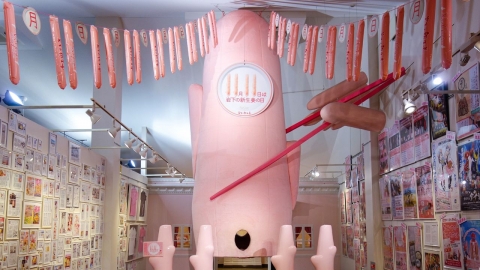Meditation
If we change the wordmeditationinto wordsbreath -Oh, how liberating! Eating also requires breathing. It is liberating and logical. We naturally find the meal as… lighter, as if it were much more delicious. Although, to be able to eat, if not meditate, at least one must breathe, and there is no complete freedom. In fact, without any dogma, breathing is meditation. Whether you often go to temples, diligently read Thich Nhat Hanh's books, study Hinduism, master yoga movements, or are unfamiliar with all of these activities, the basic definition of meditation remains unchanged or varied.Breathing and being aware that you are breathing completely, that is meditation.Similarly, we change the verbbreathwalleat: eating and being aware of what you are eating, how good or bad it is, why it is dish A and not dish B at this moment, how much of your stomach is full, that is meditation. So, even if we don't want to, we are always in the position of a Zen master, even when we eat.

In the 4.0 era, food is modernized and industrialized on one hand, and (it seems) miraculously pushed up to the culinary level with all kinds of stars and degrees on the other hand. Is it okay to have meditation in food culture?
In the late 90s and early 2000s, young Vietnamese people were excited to pool their money to enjoy a KFC or Lotteria meal together, and then conveniently memorized the definitions and names of industrial fried chicken dishes. KFC and Lotteria “fans” argued heatedly on social networks about which side’s chicken shake was better, which side called the chicken dishes more correctly. We welcomed the new millennium with a Fast Food culture. Meanwhile, aristocratic Europe was sad with its own specialties of cakes, noodles, and soups. They flocked to Asia, amazed by the colorful and diverse culinary culture, and could not finish eating all the unique specialties. It seemed that each country was a complex and fascinating culinary universe. No! Rather, within a country, like Vietnam, each region has a fascinating culinary heritage. The three regions of North, Central and South have three different cooking styles, each region branching out into many delicious dishes, regardless of whether the preparation is simple or sophisticated. The West is surprised and haunted by the question, why is Asian cuisine so diverse and unmistakable?
Thailand, Singapore, Hong Kong, Malaysia… with their tourism and service skills, have reaped countless Michelin-starred restaurants. Young travel enthusiasts have a new inspiration for travel: traveling to check-in at “starred” restaurants. However, there is a promised land with countless unique restaurants - where, whether “starred” or not, no diners care. And it is also difficult to apply European-style “starred” standards to a territory with a culinary essence that is so simple yet delicately heartwarming.
Japan
Japan is famous for its "raw meat" cases, yet the writer "dare" to call this a land of culinary elite that ignores Michelin stars?
The fresh meat I want to refer to here is... sushi and sashimi, and I have absolutely no intention of digressing into another famous industry of the Japanese land. As famous as pho, banh mi in Vietnam, everyone in the world knows Japanese thanks to frequentingorderSushi dishes are available in countless fast-food restaurants as well as supermarket chains and convenience stores. The Japanese may be proficient in machines, and their working style is somewhat mechanical, but they are not mechanical when it comes to cooking. As one of the most book-reading countries in the world, the Japanese are especially fond of cooking magazines. At any newsstand, you can easily find a plethora of culinary magazines. They are all eye-catching, neatly arranged next to each other, creating small culinary photography exhibitions, stimulating our gastric juices at a superhuman level.
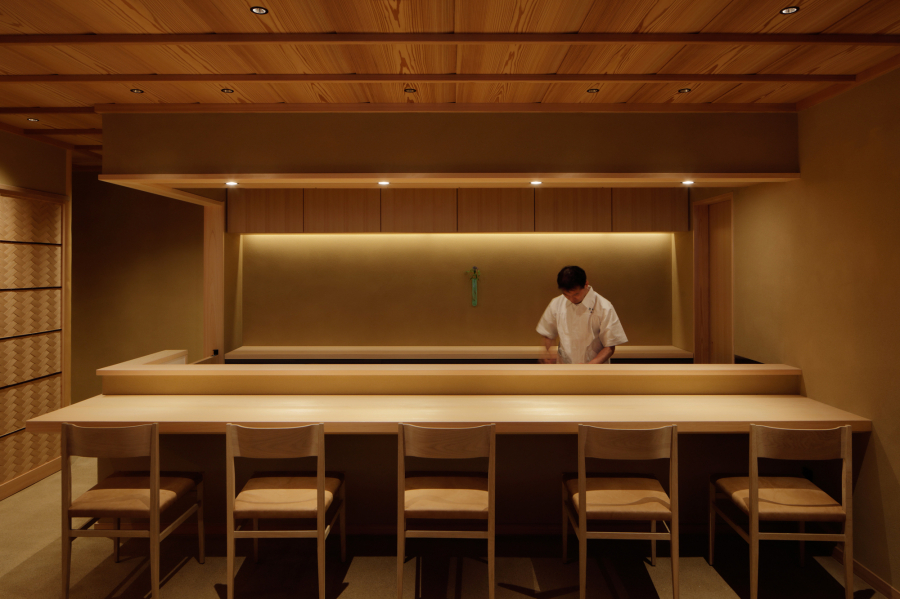
A typical Japanese style restaurant in Tokyo.
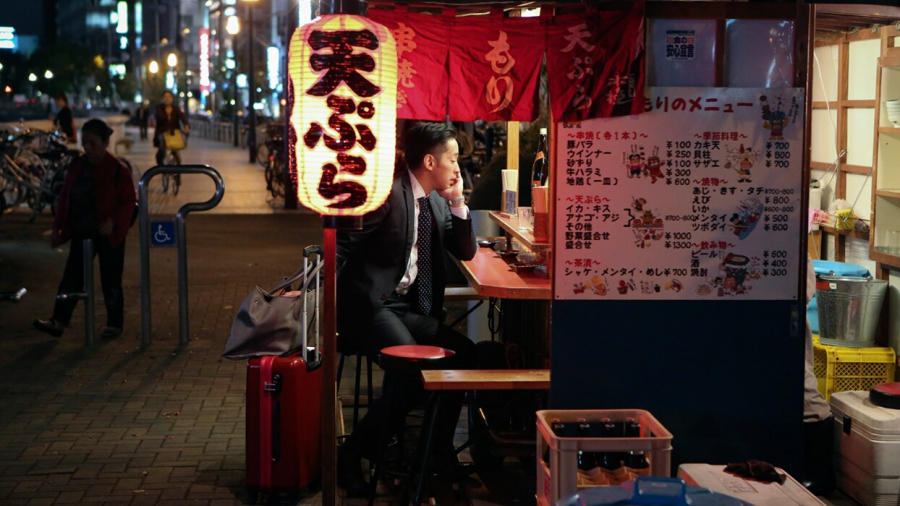
A customer waits for Ramen at a small street food stall.
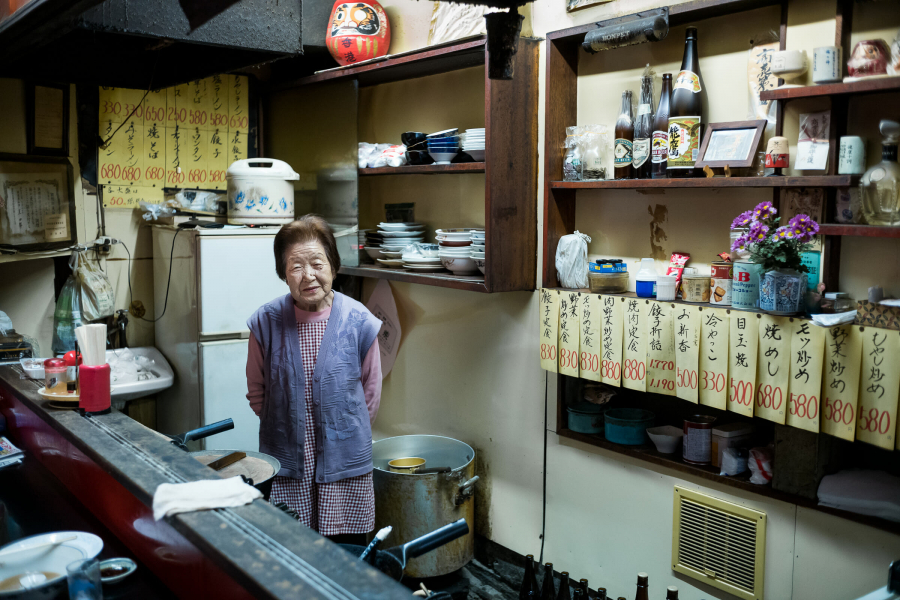
The owner of a Ramen shop, now nearly 90 years old, in Tokyo.
If China has the ability to transliterate global culinary monuments into their own language, Japan takes international delicacies and makes them… more delicious. You can enjoy ice cream, gelato, and excellent cream puffs in Japan. The limits or secrets in cuisine seem to be gently erased and sublimated, when foreign delicacies have the opportunity to enter Japan. A cake does not need to be decorated to look fancy to serve guests, but is made by the host with chicken eggs purchased from a traditional farm, butter from cows' milk in the mountains of Hokkaido, and flour.clean. Japanese cuisine clearly reflects the daily life of the Japanese people: elegant, thoughtful, attentive, dedicated and most importantly, not ostentatious. When you eat a piece of cake, you will feel peaceful, a complete and wholesome taste spreads and gently penetrates all the senses. Absolutely, the diner is not "haunted" by the scene of the host showing off his wealth and sophistication through the cake. The host and guest are in harmony, thanks to the word "love" that makes the food become many times more elegant. Meticulous, not frivolous, also avoiding trouble, everything stops at the word "enough", that is the spirit of Japanese cuisine.
But what is enough?
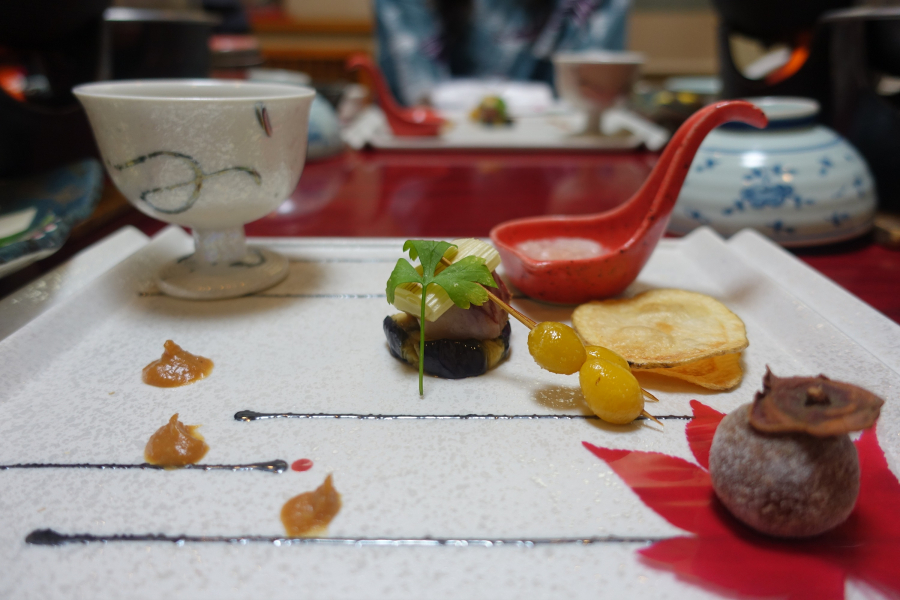
Many people laugh when they see Japanese food on the tray, which is so tiny. When will we ever be full when we eat so lavishly? I'm afraid that people's worries are... unnecessary. I dare say that the Japanese are gentle and quiet, but they eat much more than us. Having also suffered from the trauma of war, the Japanese especially value food. They are used to eating delicious food, and value delicious food. However, food is more valuable than the definition of good or bad. Food at home or in restaurants is often eaten neatly and cleanly by the Japanese. The reason the Japanese leave food behind is when there is a problem with the food, or when the invitation to eat is "problematic", making them feel disrespected. When eating or drinking, especially when participating in community activities such as on an airplane, the Japanese's tray is always clean - both literally and figuratively. Modern industrial life "gifts" people a new definition: empty food, or empty calories. The land is thoroughly exploited, apple trees and pear trees still bear fruit, but the nutritional value of an apple now is only equal to a small piece of apple many years ago, that is the simple understanding of empty food. We eat (seemingly) hard but it is difficult to get full and quickly get hungry because of that. Land resources are no longer carefully cared for by humans, as a result we "enjoy" foods that are "loose" in nutrients.
Back to the cake above, the host did not want to be fussy or show off, but just wanted the cake he made and served to his guests to be flavorful, simple as that. But in reality, is Japanese cuisine simple?
Kaiseki Ryori
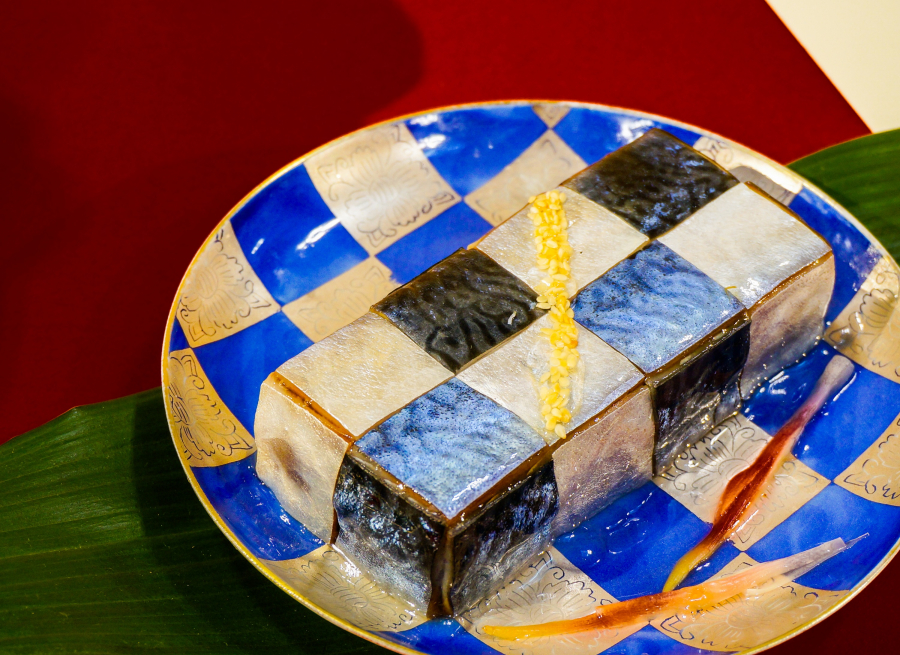
Kaiseki ryori meansfine diningJapanese style
Fine-dining sounds luxurious and sophisticated. Zen is often understood as simplicity, without frills. So fine-dining seems to have no Zen spirit at all.
Is that right?
In Europe, people invite each other to a lavish fine-dining meal that lasts from evening until late at night, with a plethora of salads, main courses, cheese, fruit, cakes, fruit ice creams for dessert, and a variety of wines to enhance the flavor of the food, stimulate gastric juices, and promote digestion... Finally, tea or coffee.
In Japan, kaiseki ryori is a traditional multi-course dinner, and diners eat leisurely and slowly. You can enjoy kaiseki ryori at any Japanese family you are close to, or at ryokan (Japanese-style inns). If Mr. Michelin were to “travel” to Japan, he would probably run out of stars, because each family-inn has a few different cooking secrets and abilities, giving us the opportunity to experience a kaiseki ryori meal that is different, unique, and unlike any other.
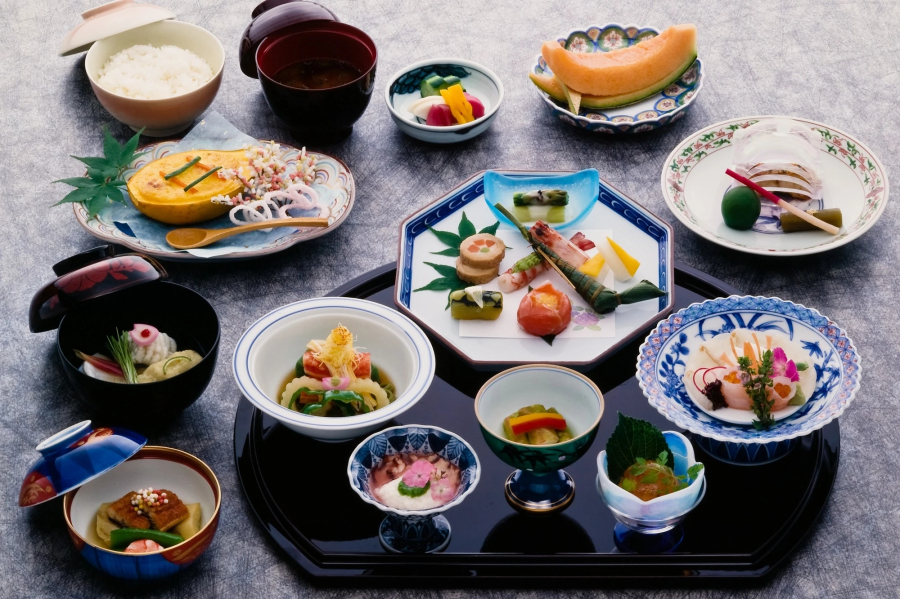
Kaiseki ryori is diverse and not stereotyped, however, the cook always knows by heart a few basic principles that are unchangeable. A thoughtful Japanese dinner will have four scenes: appetizer, main course, next main course, dessert. Each scene will have many actors, not just one main actor. So, although there are four stages, in total, we will have about two hours to enjoy at least... 14 unique small dishes. You can use tea, wine, beer to enjoy the delicious dishes, there is no need to be specific about which drink should be combined with which food. However, in the appetizer part, the host often proactively prepares for us a small glass of fruit wine with low alcohol content, enough to blush, gently stimulate the senses, and gently warm up the atmosphere before the meal.
Kaiseki ryori is interesting and surprising in all four stages, because the Japanese believe in living a life of natural harmony with all things, each season has its own food and the same earth and sky. Not only is this country good at catching seafood, it also has a full climate of four seasons, each season has a special food in full bloom. In spring, vegetable dishes are decorated with cherry blossoms. In autumn, grilled wild mushrooms sizzling interspersed with maple leaves that are as lively as small flames. The dishes are in harmony with the familiar scenery, making the dinner between people no longer have any distance from the surrounding nature. "Taking" a photo of a kaiseki ryori meal, we know what the weather was like when the photo was taken, what region the host of the meal is from, what their aesthetic ability and level are, and even how many generations the family has, how many historical periods it has gone through.

The tiny dishes contain the quintessence of the harmonious nature spirit, neatly arranged in the homeowner's collection of dishes. This is also a unique cultural feature of Japanese cuisine that makes the outside world fascinated and interested. 14 dishes are displayed inside at least 14 different types of dishes. Dishes are not arranged in a standard set. Rather, this is a combination of many sets of dishes that are closely associated with the homeowner's life. What is left, what is lost, but never forgotten or thrown away. Objects are with and attached to people for a long time, creating familiar and understanding feelings, so which dish is suitable to be displayed with which type of dishes, only the homeowner can understand. Throughout the 14 dishes, we seem to be skillfully shared by the homeowner about the development of the family, about life philosophy, in a simple and uncomplicated way, through the ceramic collection at home. That is the spirit of kaiseki ryori cuisine, where the food is not only delicious, but also imbued with the spirit of sharing and harmony.

In 2013, Washoku, which in Vietnamese means traditional Japanese cuisine, was recognized by UNESCO as an Intangible Cultural Heritage. The unique culinary culture is formed and nurtured by the characteristics of Japanese culture. Culture lasts like breath, and when mentionedbreath, we go back to the first lines of the article, breathing is meditation.
























